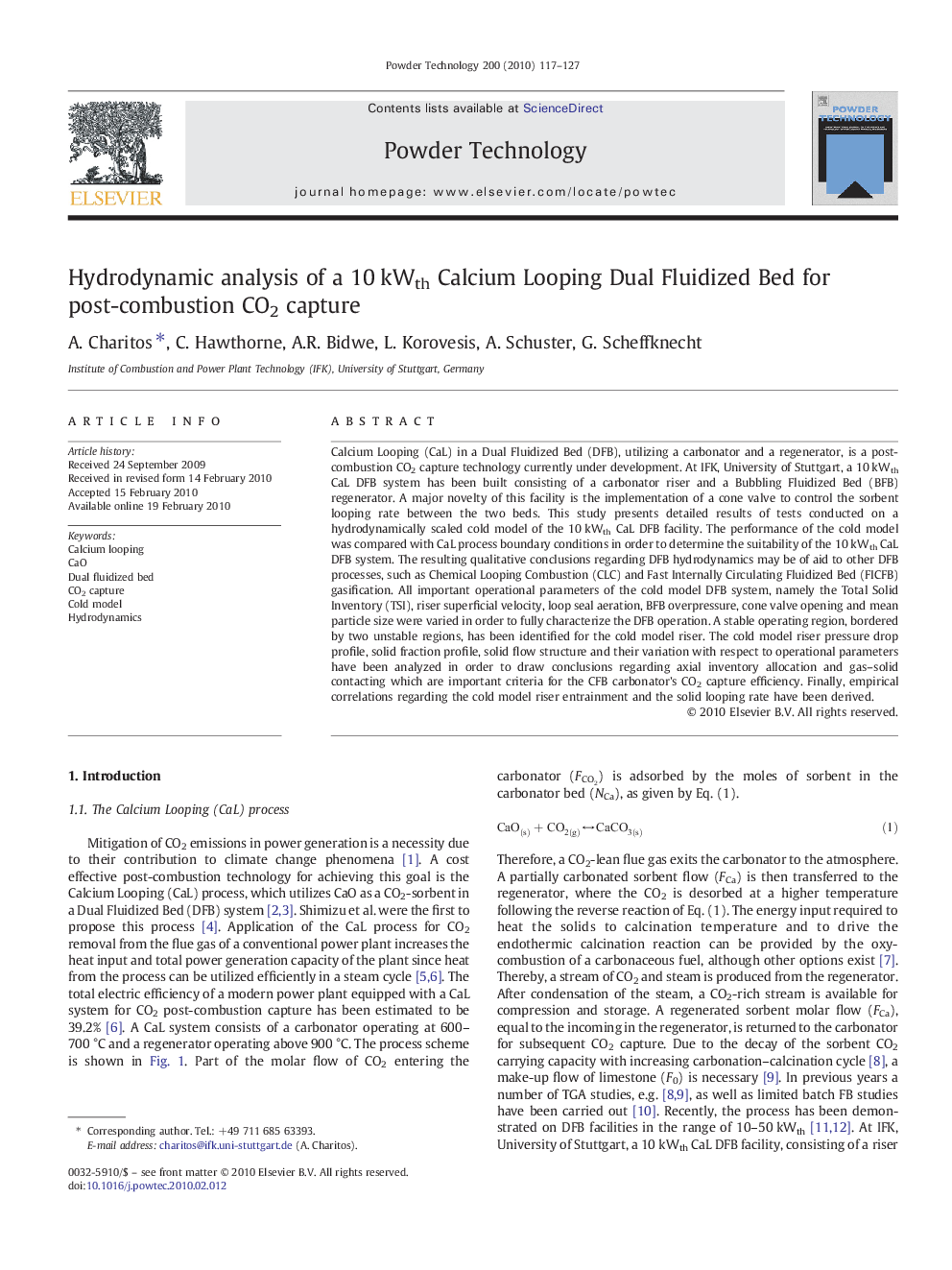| Article ID | Journal | Published Year | Pages | File Type |
|---|---|---|---|---|
| 238098 | Powder Technology | 2010 | 11 Pages |
Calcium Looping (CaL) in a Dual Fluidized Bed (DFB), utilizing a carbonator and a regenerator, is a post-combustion CO2 capture technology currently under development. At IFK, University of Stuttgart, a 10 kWth CaL DFB system has been built consisting of a carbonator riser and a Bubbling Fluidized Bed (BFB) regenerator. A major novelty of this facility is the implementation of a cone valve to control the sorbent looping rate between the two beds. This study presents detailed results of tests conducted on a hydrodynamically scaled cold model of the 10 kWth CaL DFB facility. The performance of the cold model was compared with CaL process boundary conditions in order to determine the suitability of the 10 kWth CaL DFB system. The resulting qualitative conclusions regarding DFB hydrodynamics may be of aid to other DFB processes, such as Chemical Looping Combustion (CLC) and Fast Internally Circulating Fluidized Bed (FICFB) gasification. All important operational parameters of the cold model DFB system, namely the Total Solid Inventory (TSI), riser superficial velocity, loop seal aeration, BFB overpressure, cone valve opening and mean particle size were varied in order to fully characterize the DFB operation. A stable operating region, bordered by two unstable regions, has been identified for the cold model riser. The cold model riser pressure drop profile, solid fraction profile, solid flow structure and their variation with respect to operational parameters have been analyzed in order to draw conclusions regarding axial inventory allocation and gas–solid contacting which are important criteria for the CFB carbonator's CO2 capture efficiency. Finally, empirical correlations regarding the cold model riser entrainment and the solid looping rate have been derived.
Graphical abstractCalcium Looping (CaL) is a post-combustion CO2 capture process. A hydrodynamically scaled cold model of a 10 kWth Dual Fluidized Bed (DFB) system has been operated to validate the design concept. Carbonator pressure drop, solid fraction profiles and solid looping rate variation with operational parameters have been determined. All required process boundary conditions have been fulfilled through cold model operation.Figure optionsDownload full-size imageDownload as PowerPoint slide
